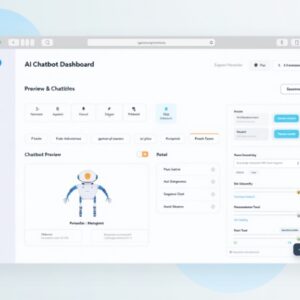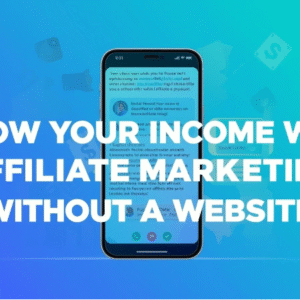Affiliate marketing keeps glowing up, and every year brings new twists that shape how creators, brands, and influencers earn online. In 2025, the landscape looks super dynamic, so working with the latest approaches is really important. Whether you’re already in the game or just getting started, knowing which strategies actually work this year helps you stay ahead and maximize your earnings.
If you’re feeling a bit lost about updates, platforms, or what’s really working right now, you’re not alone. I’ve spent plenty of time testing, tweaking, and learning from both my wins and mistakes. The good news is that adopting a few fresh tactics can give your results a boost without totally starting over.
Here are my top 10 affiliate marketing strategies for 2025. These are practical, actionable ideas that I’ve seen work, paired with some insights to help you set up for real-world success.
1. Focus on High Ticket and Recurring Commissions
With rising competition and ad costs, promoting products that pay higher commissions or offer recurring payouts is getting even more important. Think software subscriptions, online courses, or premium memberships.
- High ticket programs: These pay larger commissions per sale, so you don’t need to chase tons of conversions.
- Recurring payouts: Monthly or annual renewals from things like SaaS tools or training communities.
Targeting products people will keep using also builds a stable income over time.
Turn Your Passion into Earnings
Get the Tools, Training and Support you need. All in One Place
Join a a Vibrant and Global Community of
Marketers and Entrepreneurs from Around the World
2. Optimize for Voice Search and AI Recommendations
Voice assistants and AI powered search are everywhere now. People are using Alexa, Siri, and ChatGPT to stumble upon and buy. Updating your SEO strategy by using question based keywords, natural language, and conversational content can make your affiliate site more visible in voice search results.
I’ve had good luck answering common problems in a Q&A style. Google and other engines love to feature these. Scoring those top spots means passive traffic and affiliate clicks.
3. Build Microcommunities
Niche audiences are super valuable. Instead of building broad sites or pages, I get more focused: think DIY photography lighting or gluten-free meal planning. Running a private Facebook group, Discord channel, or Telegram group connects you directly with loyal fans who actually want your recommendations.
- Get people involved with polls, AMAs, and behind the scenes shares.
- Share exclusive affiliate deals tailored to their interests.
This approach usually gets higher conversion rates because your advice feels personal and relevant.
4. Short Form Video Is a Traffic Magnet
Reels, TikToks, YouTube Shorts, they’re all over. Short form video makes it easy to show off affiliate products in an honest, fun way. I’ve noticed that simple, straight to the point demos or quick howtos make people actually click affiliate links in video descriptions.
- Try product unboxings or “before and after” experiments.
- Link your affiliate offer just above the fold for easy access.
With social commerce growing, this strategy pays off even for those not keen on longform content.
5. Detailed Product Comparisons and Firsthand Reviews
AI content is everywhere, but real world experience stands out. Writing long-form, super detailed reviews or even better, comparison posts between top products shows your audience you actually know what you’re talking about.
I’ve found success when I honestly list pros and cons, include original images, and genuinely share what works or doesn’t work. People trust you more, and so do algorithms.
6. Email Funnels with Segmentation
Email isn’t dead. In fact, targeting specific interests with segmented lists and automation helps keep your recommendations personal and useful. I split my list by what people signed up for (diet tips, marketing tools, etc.), then send offers they actually care about.
- Use welcome series to educate, not just pitch.
- Include helpful content with every affiliate mention.
This approach often builds more loyal subscribers who appreciate your insight. Try offering a unique downloadable or checklist to give new signups a reason to stick around.
7. Native Ads and Sponsored Content
For bigger reach, combining native advertising (ads that match the look of a platform) or writing sponsored content can introduce affiliate recommendations in a natural way. Google Discovery ads, infeed Instagram posts, or promoted stories all blend in smoothly and can generate a steady stream of targeted visitors.
I always mark sponsored posts clearly. This builds trust and keeps me compliant with ad policies, while also making it easy for readers to spot paid promotions.
8. Make the Most of User Generated Content (UGC)
UGC, such as customer reviews, unboxing photos, or testimonials, works because people trust real users. Building campaigns that encourage your audience to share their own results with affiliate products adds authenticity.
I sometimes run giveaways or offer small rewards for the best product photos or stories. This not only increases engagement but also gives me great material to use in future promotions.
- Share standout submissions in newsletters or posts.
- Thank contributors to build positive vibes around your brand.
Don’t underestimate how much trust a quick testimonial from a real customer can build!
9. Use Analytics and AI Tools to Guide Decisions
Tracking which offers and pages actually convert lets you put your energy where it counts. New AI powered tools (like Jasper or SurferSEO) help spot low competition keywords and top performing content angles.
Adjusting your approach based on real data means better ROI and less wasted effort. I check my dashboard weekly, cut out underperformers, and double down on what’s working. Using heatmaps and click tracking tools can also help spot what people really care about on your pages.
10. Prioritize Transparency and Compliance
Regulations continue to tighten in the affiliate space. I make sure every post, video, or email that includes an affiliate link has clear and visible disclosures. Being open about sponsored links and respecting privacy goes a long way toward keeping partnerships and search engines happy.
Staying above board also means less stress when platforms update their rules. Remember, honesty with your audience pays off in the long run.
Affiliate Price Models
Affiliate marketing offers a few different price models:
- Pay per sale (PPS): You get paid when someone buys through your link.
- Pay per click (PPC): You earn for every click, regardless of a sale (less common these days).
- Pay per lead (PPL): Earn commissions when a person completes a signup form or similar action.
For 2025, pay per sale and recurring models are usually the most reliable for digital products or SaaS tools. Mixing in some variety with your offers lets you test which pays the best based on your audience.
Pros and Cons
- Pros:
- Low startup costs, no need to create your own products.
- Income can scale well with audience growth and automation.
- Works across tons of niches: finance, fitness, tech, and more.
- Flexible: work from anywhere, anytime.
- Cons:
- Building traffic and trust takes time and consistent effort.
- Income can be unpredictable, especially at first.
- Relying on affiliate programs means rule changes can switch things up for your earnings.
- Staying compliant and keeping up with updates can be a bit of a hassle.
Fun Facts About Affiliate Marketing
- The first known affiliate program started in 1994, long before most social media platforms even existed!
- Amazon’s affiliate program, launched in 1996, is still thriving and pays out millions every year.
- In some niches, such as software, a single sale can earn an affiliate hundreds or even thousands of dollars.
- Influencer and affiliate marketing often overlap, but you don’t have to be “famous” to succeed. Many creators with small, loyal audiences earn steady income.
Looking for a training platform that actually works?
I’ve put together a full walkthrough of the affiliate marketing training that helped me build everything I have today. It’s practical, beginner-friendly, and you can try it out for free to see if it suits you.
Take a look at my honest review and see if it’s the right fit for you.
Summary
Affiliate marketing in 2025 rewards those willing to get personal, stay nimble with their tactics, and keep an eye on what’s working. Approaches like focusing on recurring income, building tight knit communities, creating real world content, and using tech tools all help boost results. Staying compliant and open with your audience will keep things running smoothly for the long haul.
FAQ
- Is affiliate marketing still profitable in 2025?
Yes, but it helps to focus on up-to-date strategies since trends and technology can mix it up each year. - How long does it take to see results?
If you’re consistent, expect early wins in a few months, but bigger results usually show up after six months to a year. - Do you need a big audience?
Not always. Small but engaged groups can convert really well, especially in targeted niches. - What happens if an affiliate link stops working?
Regularly check your links and update or swap out faulty ones to avoid missed commissions. - Do I have to use social media?
It helps for traffic, but some folks do well with SEO blogs or email lists alone.
Final Thoughts
Affiliate marketing is still an awesome way to build an income stream, whether as a side hustle or your main gig. Tactics keep switching up, but focusing on honest recommendations, keeping up with tech, and treating your audience like real people keeps you on track. I’m always tweaking my process, and these 10 strategies are what I’ll be using in 2025. Keep learning, stay flexible, and see what truly resonates with your readers, that’s the real secret to long-term affiliate success.
Let’s make it happen!





